Building 1-4, Tongfuyu Industrial Zone, Aiqun Road, Shiyan, Baoan District, Shenzhen City,China
YINHAN P40 Ultra-Bright Mesh Screen Transforms Shenzhen Cultural Plaza into a Luminous Icon
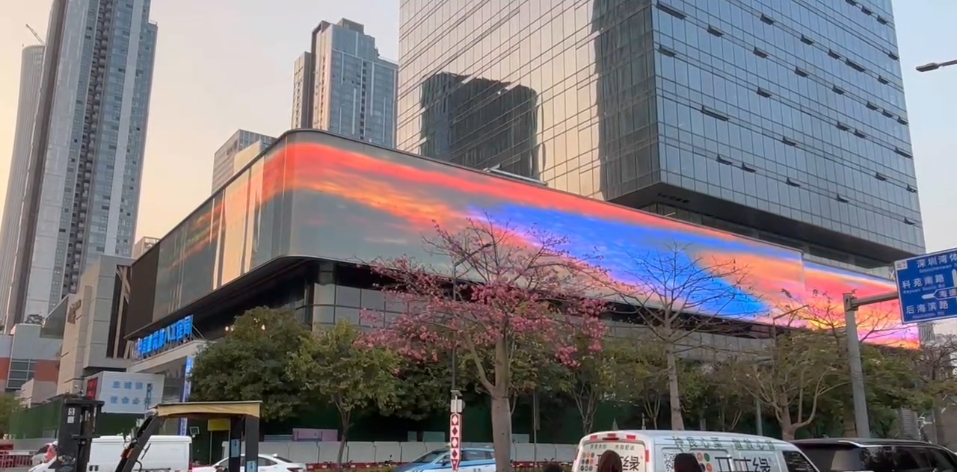
In the ever-evolving realm of outdoor architectural media, the seamless merging of advanced lighting systems and display technologies with building facades is redefining urban skylines globally. Our recently completed P40 LED mesh screen installation in Shenzhen epitomizes the transformative potential of cutting-edge engineering harmonized with visionary design. This article delves into the project’s technical intricacies, the challenges overcome during implementation, and the breakthrough innovations that position it as a benchmark in intelligent facade integration.
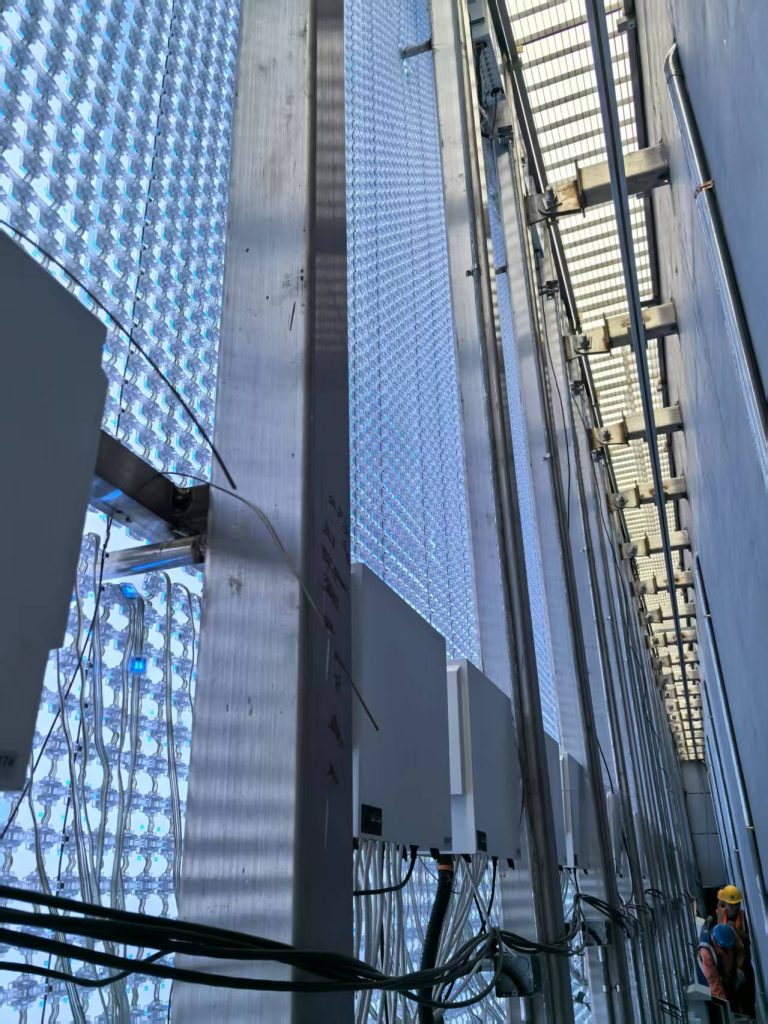
This project entailed a full-scale transformation of a landmark commercial building’s media facade in Shenzhen. The client sought a system capable of delivering crisp, vibrant nighttime visuals while maintaining high-impact visibility under direct sunlight—a rigorous dual-environment performance demand that poses significant challenges in outdoor digital installations.
Why P40 LED Mesh Screen?
Choosing the P40 mesh screen was a strategic decision, driven by several performance and application-specific factors:
1.High Brightness: At >5cd/pcs nits, the screen maintains excellent visibility even under strong daylight, ensuring the screen is never washed out and always captures attention.
2.Lightweight and Transparent Design: The mesh architecture allows for up to 80% transparency, making it ideal for glass or open-structure facades without blocking light or airflow.
3.Lower Power Consumption: With only 0.8W per pixel, this system significantly reduces operational costs while maintaining powerful visual output.
4.Weather Resistance: Designed with IP67-rated waterproofing, the product is fully protected from dust, rain, snow, and extreme temperatures, making it ideal for Kazakhstan’s continental climate.
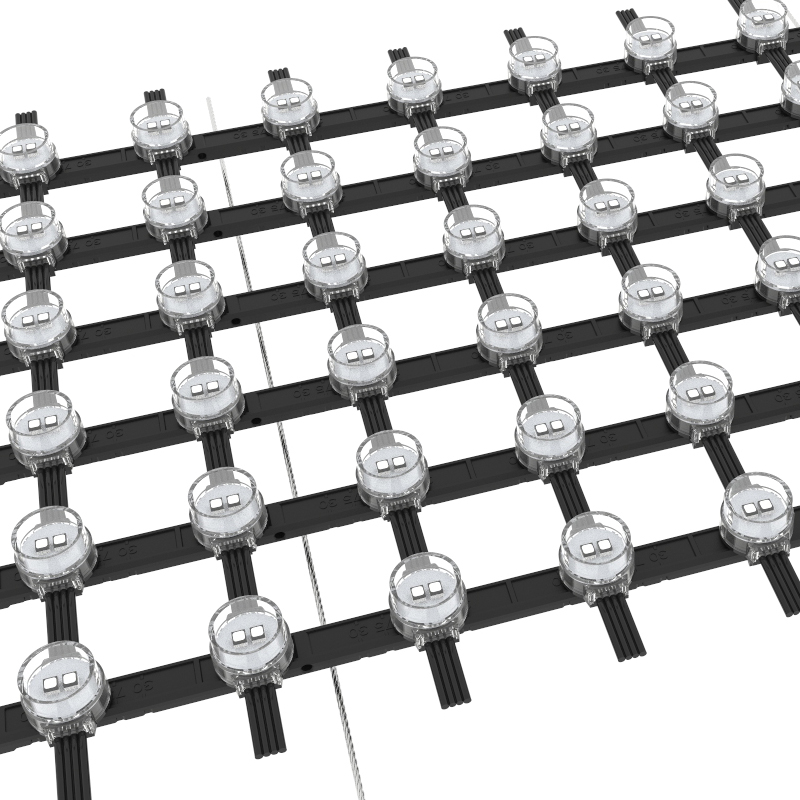
Core Client Requirements & Engineering Challenges
The project demanded resolution of critical pain points:
● High-intensity daylight visibility in a sun-drenched, open-environment setting.
● Ultra-low structural load to preserve the building’s glass facade integrity.
● All-season resilience against extreme temperature fluctuations
● Seamless maintenance protocols ensuring zero operational downtime.
Through cross-disciplinary collaboration with the client’s architectural and facilities teams, our engineers deployed an iterative design process. This resulted in an adaptive system architecture that not only addressed all constraints but surpassed performance benchmarks for lifecycle durability and visual consistency.
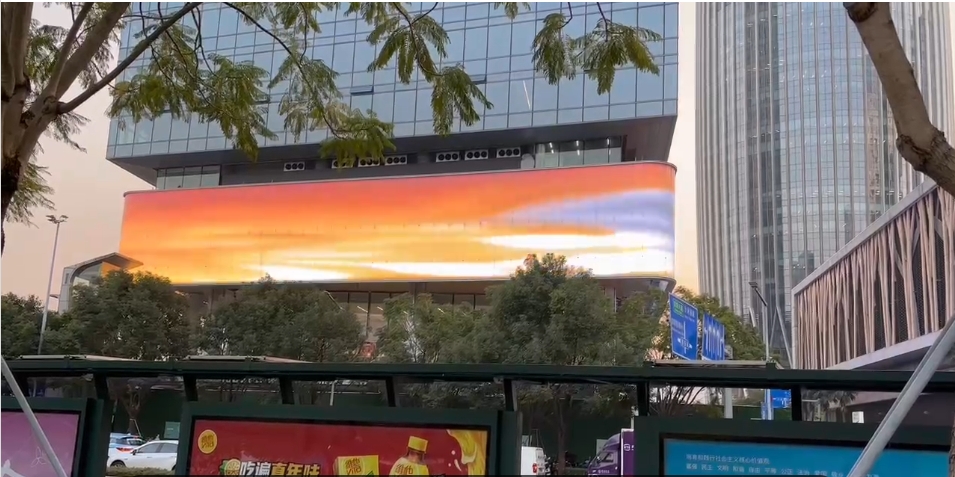
Here’s a refined, technically robust version of your text:
Technical Highlights & Engineering Innovations
1. DC12V Power Architecture
Engineered to outperform traditional AC and high-voltage DC systems, the DC312V platform delivers:
● Intrinsic safety compliance with low-voltage operation
● <3% voltage drop across 100m cable runs, ensuring uniform brightness distribution
● EMI reduction of 62% compared to AC-driven systems, critical for urban RF environments
● Adaptive power routing with IP65-rated surge protection and ±5% voltage stabilization
2. Aerodynamic Mesh Topology
Beyond lightweight construction, the reengineered mesh:
● Cuts wind load by 40% through computational fluid dynamics (CFD)-optimized aperture design
● Preserves 80% daylight transmittance via hexagonal cell geometry
● Hot-swappable modules with ±15° planar adjustability for seamless integration with curved glazing systems
Modularity enables:
● Scalable configurations from 5m² to 500m² without structural reinforcement
● Single-module RMA replacement in <8 minutes via front-access docking system
3. Distributed Pixel Control Ecosystem
Proprietary SPI protocol achieves:
● 24-bit color depth at 3840Hz refresh rates for cinematic motion clarity
● Microsecond-level latency (≤50μs) across 650,000 individually addressable pixels
● Dual-redundant control loops with automatic failover
Cloud-integrated management provides:
● Real-time thermal monitoring (PCB-level sensors)
● Predictive maintenance alerts via AI-driven anomaly detection
● Multi-zone content scheduling through API-driven CMS integration
Strategic Advantages
The Shenzhen project exemplifies our leadership in intelligent facade solutions through three core differentiators:
1. Hyper-Customized Integration
● Co-design workflows with architects and brand teams via real-time BIM/CAD interoperability
● Parametric modeling to align pixel density (10,000-25,000 nits), color gamut (110% NTSC), and viewing angles (160°H/140°V) with site-specific requirements
2. Performance-Driven Engineering
● ISO 14006-certified sustainable system design: 42% energy savings vs. industry benchmarks via adaptive dimming algorithms
● Military-grade durability: IP6K9K water/dust resistance, 25-year anti-corrosion coating, and -20°C~+60°C operational range validation
3. Lifecycle Partnership Model
● 48-hour remote diagnostics with augmented reality (AR)-assisted troubleshooting
● Smart maintenance forecasting leveraging 12-month operational data analytics to preempt failures
● 98% client retention rate through SLA-backed annual efficiency audits and firmware optimization
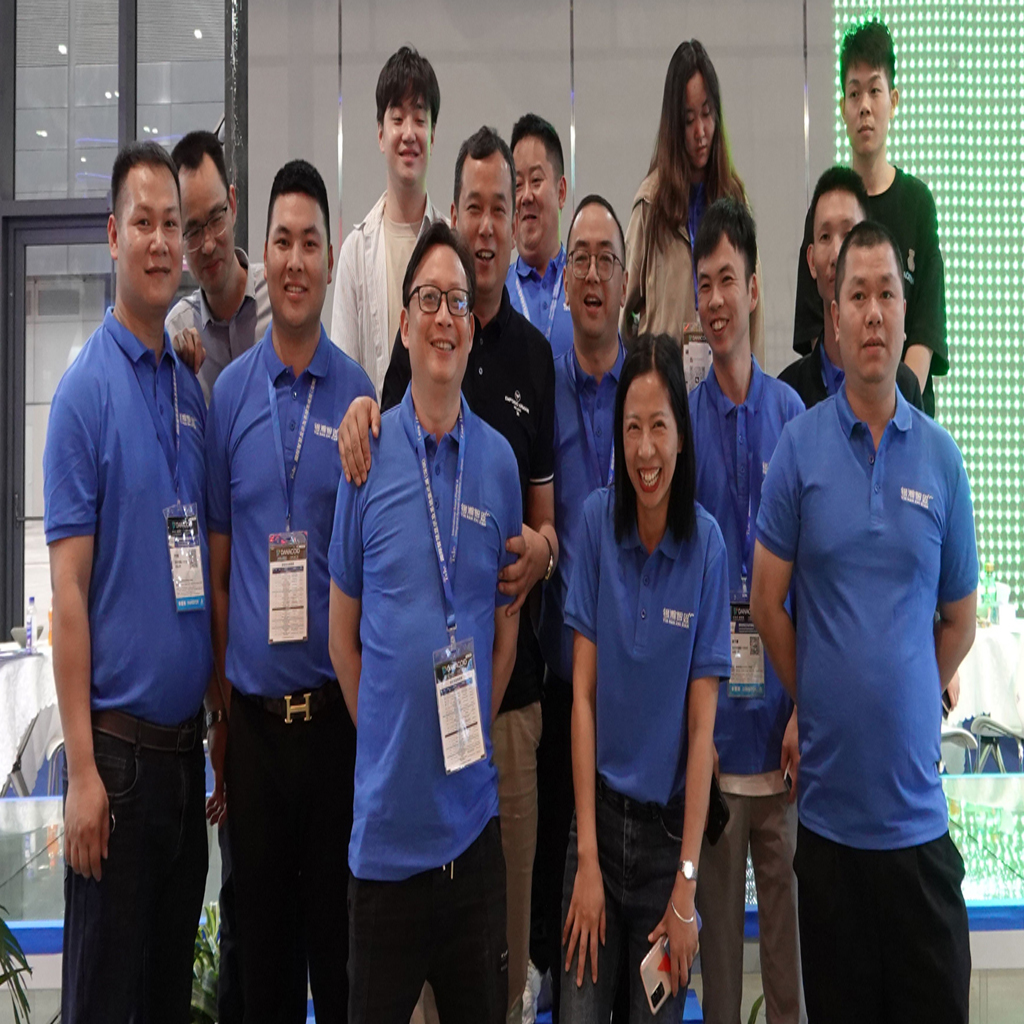
Conclusion
Our Shenzhen P40 high-brightness LED mesh screen project demonstrates how intelligent design and advanced LED technology can create powerful media architecture without compromise. From harsh climate performance to elegant visual integration, this solution has delivered on every front.
If you are planning a building media transformation or a large-scale façade display, our custom-engineered LED mesh screens offer the performance, durability, and aesthetic control needed to bring your vision to life.
👉 Contact us today to discuss your project requirements or schedule a visit to one of our factory.

